The science behind Neurofeedback
Neurofeedback is emerging as a powerful tool for enhancing brain function, supported by growing scientific evidence. This page explores the research, case studies, and mechanisms behind neurofeedback, offering step-by-step insights into its effectiveness and potential for addressing focus, beter sleep, health and recovery.
Additionally, we share the latest tech gear and insightful podcasts on this subject to keep you updated on the cutting-edge advancements in neurofeedback and brain optimization.

"The human brain is just a complex machine, composed of billions of neurons, and in the end, it is just another part of the universe."
Stephen Hawking
Train your brain
Just like your abdominal muscles
Like to know more about this topic? Check the podcasts about Neurofeedback



The mind is the result of billions of chemical reactions
You get real-time feedback on your brainwave patterns
A workout for your brain
When you train with neurofeedback, you’re teaching your brain to work more efficiently. The brain has electrical activity, which is measured in brainwaves. These brainwaves control how we feel, think, and behave.
Sometimes, our brainwaves can get “out of balance” — for example, too much of one type of wave and not enough of another — which can lead to issues like stress, anxiety, or difficulty focusing.
Neurofeedback helps by giving you real-time feedback on your brainwave patterns. Through sensors on your scalp, it tracks your brain’s activity and shows you when your brain is making the right kind of waves for the task at hand.
For example, when your brain is calm and focused, you get positive feedback.
Over time, your brain learns to stay in these more balanced patterns, which can improve things like mood, concentration, and overall mental well-being.
In short, neurofeedback is like a workout for your brain. It helps you “train” your brain to be more balanced and efficient, leading to better mental and emotional health.
.
Publications in Dutch
Publications in English
Stress onder controle met neurofeedback
Getting stress-related disorders under control: the untapped potential of neurofeedback
Stressgerelateerde aandoeningen behoren wereldwijd tot de grootste uitdagingen in de gezondheidszorg die om innovatieve oplossingen vragen. In recent onderzoek stellen Florian Krause, David Linden en Erno Hermans hedendaagse neurofeedback voor als een veelbelovende methode om deze stoornissen aan te pakken, wat hoop biedt voor miljoenen mensen over de hele wereld.
Stressgerelateerde stoornissen hebben zich snel ontwikkeld tot een groot mondiaal gezondheidsprobleem. Traditionele behandelingen, waaronder therapie en medicatie, schieten voor veel patiënten vaak tekort. Met de COVID-19 pandemie en andere wereldwijde crises zijn deze problemen alleen maar erger geworden. Dit groeiende maatschappelijke probleem vraagt dringend om actie en meer effectieve interventies. Lees meer op radboudumc
- Recent neuroscientific research has shown that stress-related disorders are characterized by maladaptive dynamic changes in large-scale brain networks in response to stressors, raising the possibility of modulating these networks as a promising target for intervention.
- Neurofeedback can be used to train individuals to endogenously modulate brain network dynamics. Once learned, this skill is transferrable to ecologically relevant scenarios outside of a laboratory or treatment facility, and individuals can be trained to explicitly apply it at the right moments as part of a just-in-time adaptive intervention in response to actual stressors in daily life.
Read more…
Research and evidence
Escolano et al. (2014)
Vernon et al. (2003)
This study demonstrated that eight sessions of neurofeedback training aimed at increasing alpha activity resulted in improvements of 10-25% in focus and cognitive performance in healthy adults.”
Research found that neurofeedback training led to improvements in attention and executive functions, with an effect size of 0.6-0.7 in healthy participants
Personalized treatment
Research
Increasing focus on tailoring neurofeedback protocols to individual brain patterns. Advances in technology and EEG analysis allow for more precise and personalized treatment, enhancing the effectiveness of neurofeedback therapy..
Studies such as those by Hammond (2011) and Roth et al. (2020) highlight the importance of customizing brainwave training to address specific neural dysregulations in patients with PTSD and other mental health conditions. Personalized neurofeedback offers higher success rates in symptom management.
Integration with Other Therapeutic Modalities
Neurofeedback is increasingly being integrated with other therapies such as Cognitive Behavioral Therapy (CBT), EMDR (Eye Movement Desensitization and Reprocessing), and mindfulness to optimize treatment outcomes.
Research:
A 2018 study by the American Psychological Association found that combining neurofeedback with traditional therapies significantly reduces PTSD symptoms compared to conventional treatments alone. This holistic approach improves cognitive flexibility, emotional regulation, and overall brain function..
Neurofeedback for trauma and PTSD
Research:
One of the most exciting recent trends is neurofeedback’s effectiveness in treating trauma and PTSD. As awareness of trauma’s long-lasting effects on the brain grows, neurofeedback is becoming an increasingly popular alternative treatment.
A 2021 systematic review in the Journal of Clinical Psychology concluded that neurofeedback shows promise in treating PTSD by reducing hyperarousal, intrusive thoughts, and emotional dysregulation. Schneider et al. (2021) found significant improvement in PTSD patients after neurofeedback treatment, specifically in regulating the amygdala and prefrontal cortex regions.
Neurofeedback for enhancing cognitive performance
Beyond treating mental health conditions, there’s growing interest in using neurofeedback for cognitive enhancement. Neurofeedback is being used to improve focus, memory, and mental clarity in healthy individuals, including students, athletes, and professionals.
Research: Sahin et al. (2023)
Found that neurofeedback training can enhance cognitive performance, including attention span, memory retention, and decision-making abilities. These findings are fueling the use of neurofeedback in fields like education, sports, and business.
References
Are you looking for more evidence before committing to neurofeedback therapy, here are some key sources:
- Hammond, D. C. (2011). Neurofeedback for the treatment of PTSD. Journal of Neurotherapy.
- Schneider, E. et al. (2021). The impact of neurofeedback on PTSD: A systematic review. Journal of Clinical Psychology.
- Roth, R. et al. (2020). Personalizing neurofeedback for trauma recovery: Advances and insights. Trauma and Recovery Journal.
- Sahin, A. et al. (2023). Cognitive enhancement using neurofeedback: A meta-analysis. Neuroscience and Neurotherapy.
How Nasa used neurofeedback
Astronauts and pilots often operate in environments requiring extreme focus, quick decision-making, and emotional regulation. NASA explored neurofeedback as a way to train the brain to maintain peak performance under these high-stress conditions. By monitoring brainwaves and providing real-time feedback, neurofeedback helped individuals achieve optimal mental states, such as heightened focus or relaxation when necessary.



To enhance alertness
Manages complex data streams
Help astronauts manage stress
Space missions involve irregular sleep cycles, leading to fatigue and reduced cognitive function. NASA used neurofeedback to help regulate brain activity and improve sleep quality, ensuring astronauts remained alert and cognitively sharp during critical mission tasks.
Pilots and astronauts often deal with “cognitive overload,” where the brain processes a massive amount of information simultaneously. Neurofeedback training was employed to help individuals manage this load more effectively, maintaining clarity and calmness even in overwhelming situations.
NASA utilized the Life Sciences Data Archive to study how brainwave patterns impact performance in space. Neurofeedback was also tested in simulations and training to help astronauts manage stress and task overload, highlighting its value in optimizing performance in demanding environments.
